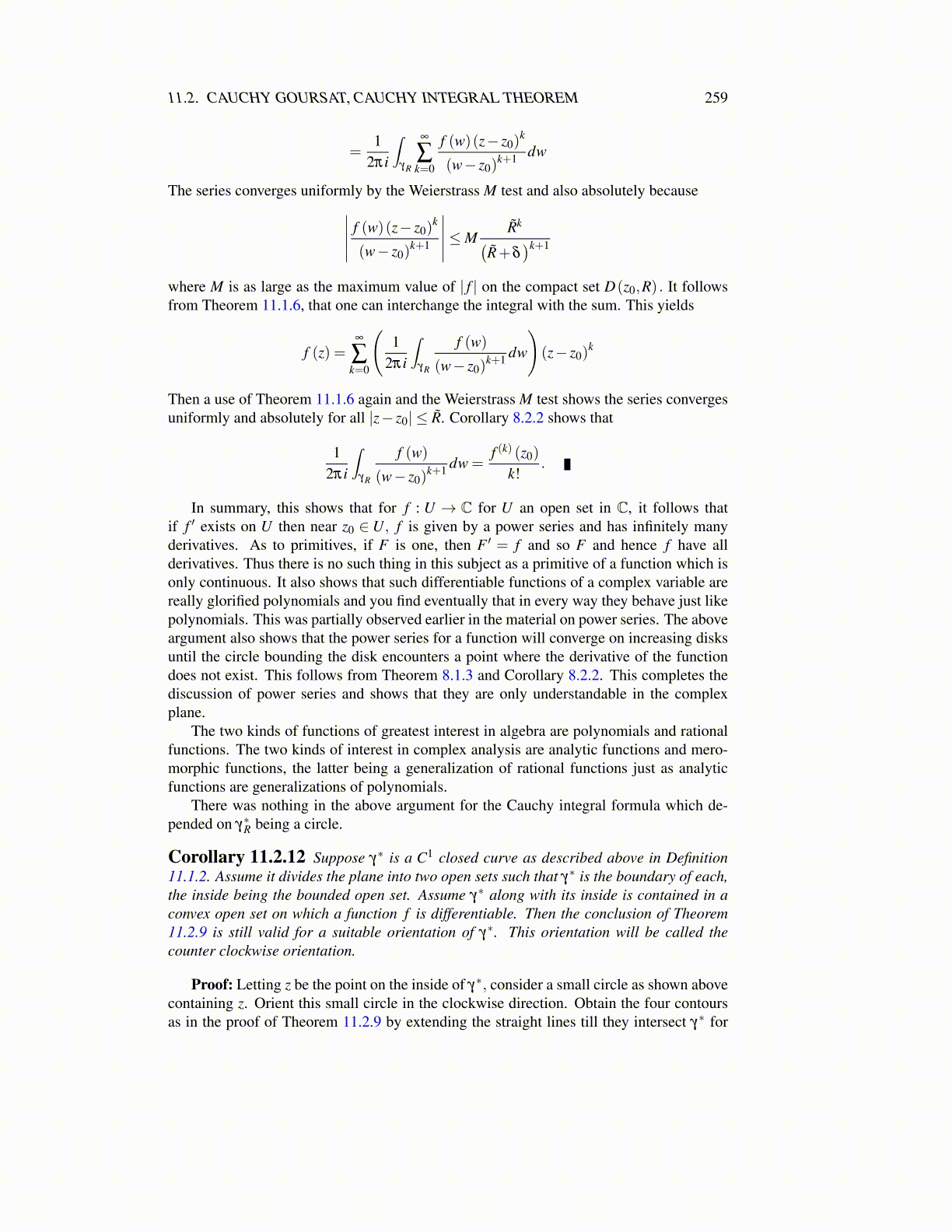
11.4. THE LOGARITHM 259
Case 1. a0 ̸= 0. Then for z close to z0,h(z)−1 = 1
a0+∑
∞k=1 bk (z− z0)
k since h(z)−1 hasa derivative, so
f (z) = w+1a0
+∞
∑k=1
bk (z− z0)k = g(z) analytic
which shows the result in this case.Case 2. h(z) = ∑
∞k=m ak (z− z0)
k ,m > 1 where am is the first nonzero a j. Then in thiscase,
h(z)(z− z0)
m =∞
∑k=m
ak (z− z0)k−m ,
(z− z0)m
h(z)= (z− z0)
m ( f (z)−w) =1
am+
∞
∑k=1
ck (z− z0)k ,
for some ck. Thus f (z)−w = 1(z−z0)
m
(1
am+∑
∞k=1 ck (z− z0)
k)= g(z)+∑
mk=1
bk(z−z0)
k for
some analytic function g(z).This shows that if z0 is an isolated singularity, then unless something really bizarre
happens, ( f(B̂)
dense in C) the function has a pole at the singularity or is equal to ananalytic function. How bizarre? If the isolated singularity is not a pole, then f−1 (β )∩ B̂is infinite for every β ∈ C with maybe one exception. This is Picard’s theorem and isan interesting known result but to see this proved see a more advanced book on complexanalysis like Conway [12], Page 300.
11.4 The LogarithmFirst of all, we define for z = x+ iy,ez ≡ ex (cos(y)+ isin(y)) . This agrees with ex wheny = 0. Then it is routine to verify that the usual rules of exponents apply. That d
dz (ez) = ez,
let h = h1 + ih2 and using the power series for cos,sin,
ez+h− ez = ez(
eh1 (cos(h2)+ isin(h2))−1)= ez
(eh1 −1
)+ iezeh1h2 +o(h)
= ezh1 + iezeh1h2 +o(h) = ezh+o(h)
Next I want to define a logarithm which is the inverse of this function. You want to haveelog(z) = z = |z|(cosθ + isinθ) where θ is the angle of z. Now log(z) should be a complexnumber and so it will have a real and imaginary part. Thus
eRe(log(z))+i Im(log(z)) = |z|(cosθ + isinθ) (11.3)
where θ is the angle of z. The magnitude of the left side needs to equal the magnitudeof the right side. Hence, eRe(log(z)) = |z| and so it is clear that Re(log(z)) = ln |z|. Notethat we must exclude z = 0 just as in the real case. What about Im(log(z))? Having foundRe(log(z)) , 11.3 is
|z|(cos(Im(logz))+ isin(Im(logz))) = |z|(cosθ + isinθ) (11.4)
which happens if and only ifIm(logz) = θ +2kπ (11.5)
for k an integer. Thus there are many solutions for Im(logz) to the above problem. Abranch of the logarithm is determined by picking one of them. The idea is that there is only